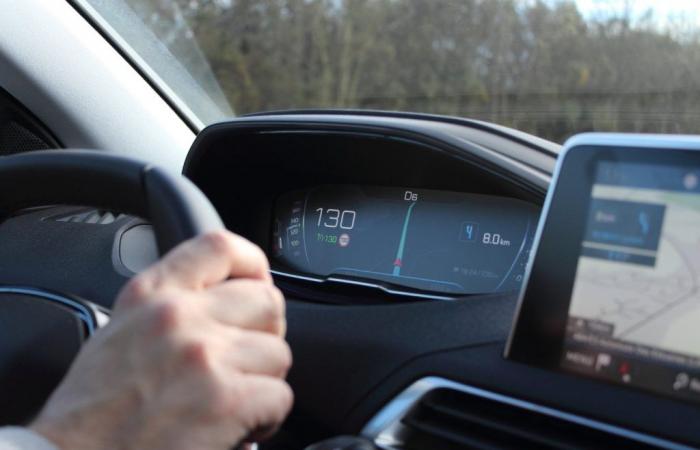A slight overestimate for your safety?
The question is not as simple as it might seem. According to several sources, vehicle speedometers have a tendency to slightly overestimate the actual speed, sometimes by around 5%. This margin is integrated by manufacturers to ensure that the speedometer never underestimates your speed. For example, if you “really” drive at 50 km/h, your car’s speedometer could well show 53 to 55 km/h, or even more for certain models. For a real speed of 130 km/h on the highway, some vehicles can even indicate a speed of up to 138 km/h.
As a result, it’s not uncommon for the Waze app to show a lower speed than your vehicle’s speedometer, which may prompt you to press a little harder on the accelerator. However, even though the speed displayed by Waze is generally closer to the actual speed than that of the car’s speedometer, it is not always accurate.
Waze depends on GPS
Over 140 million monthly users worldwide use Waze! In France, the app benefits from a huge community, since it is used by 40% of French motorists to best calculate their routes.
Waze calculates speed using location data from your smartphone. This data comes from the device’s GPS, which allows the app to calculate travel speed. However, GPS is often less accurate in cities with narrow streets, buildings, tunnels or even bad weather, and so there is usually a small delay when you accelerate before Waze displays your new speed. Likewise, if your phone has a weak signal or the signal quality fluctuates, this can also affect the accuracy of the displayed speed.
That said, if you are driving at a constant speed of 80 km/h on a road or 130 km/h on a highway, Waze should display a more precise speed, because it is stable and therefore more easily calculated. However, special vigilance is necessary, especially if you are used to driving near the authorized speed limits.
Remember that exceeding the speed limit by just 5 km/h could cause you to be flashed by a radar and result in a fine of 135 euros.
Stay vigilant
While technology can help you navigate and monitor your speed, it’s always better to rely on your vehicle’s speedometer, and accept the slight overestimation instead of risking a fine or worse, an accident. Reliance on navigation apps, as useful as they are, should never replace attentive and careful driving. It is best to always consider the posted speed limit as the maximum speed, and not as a target to achieve.
???? To not miss any news on the Journal du Geek, subscribe on Google News. And if you love us, we have a newsletter every morning.






